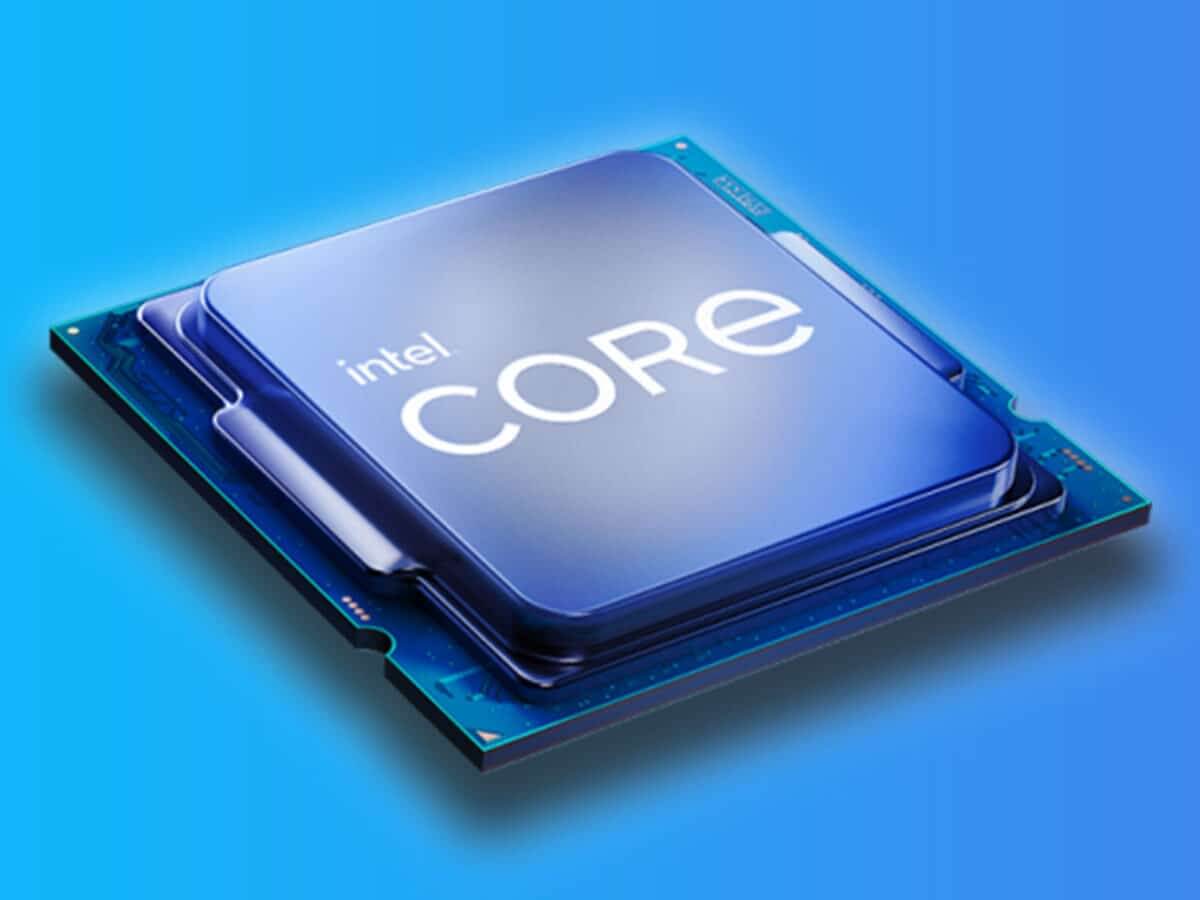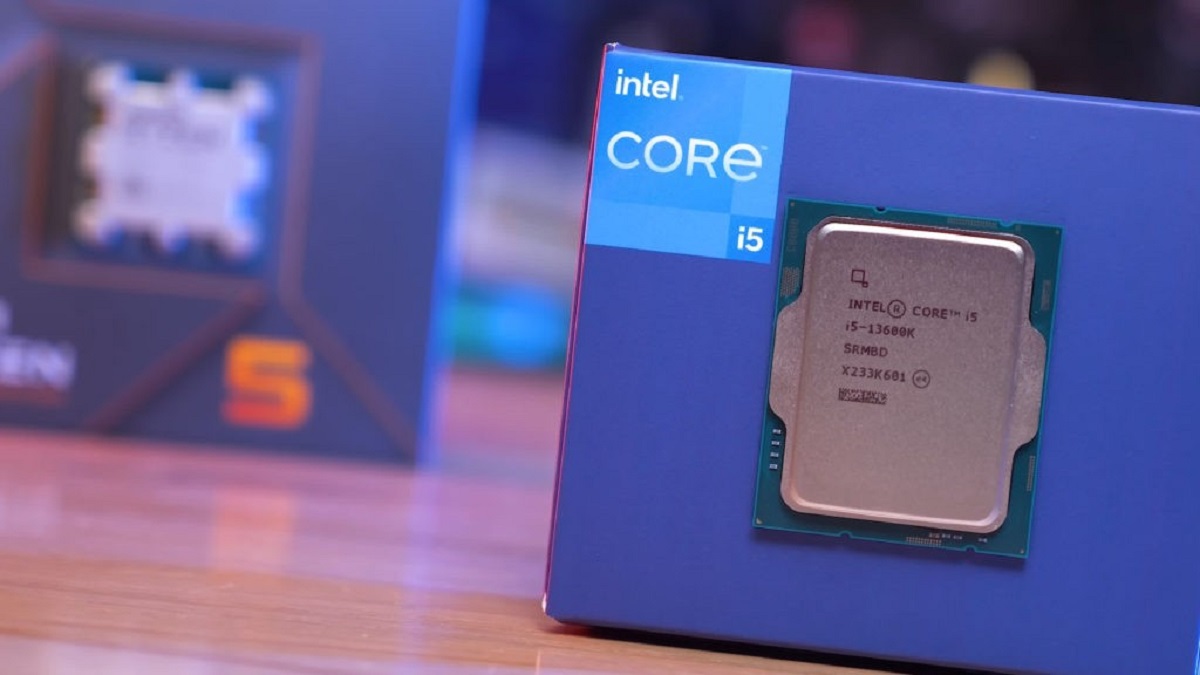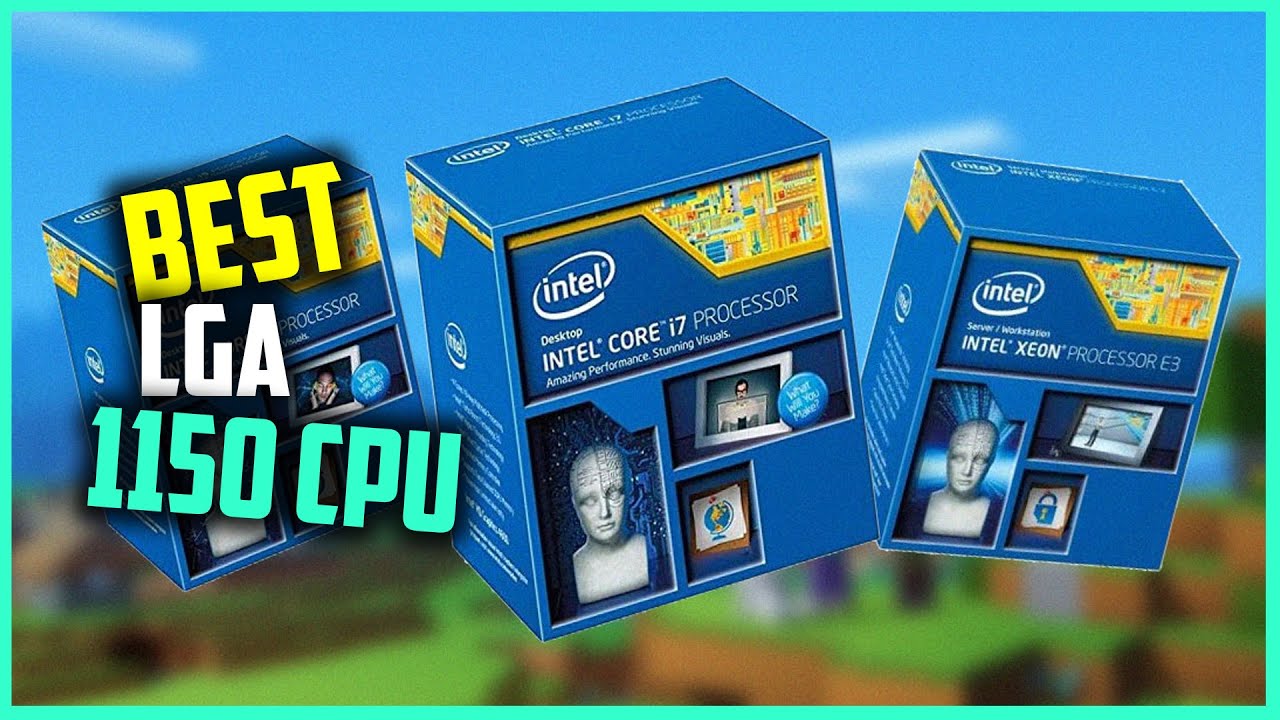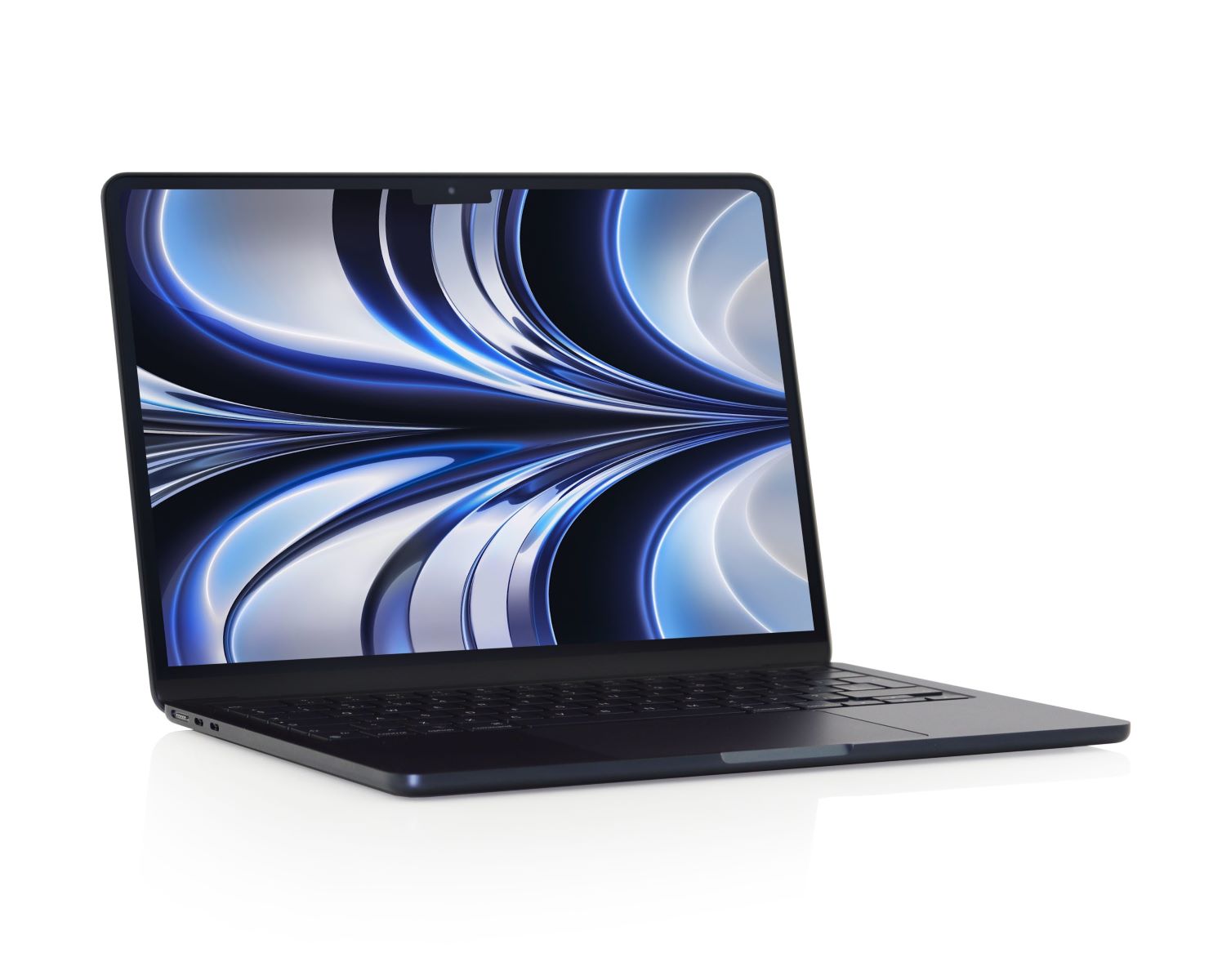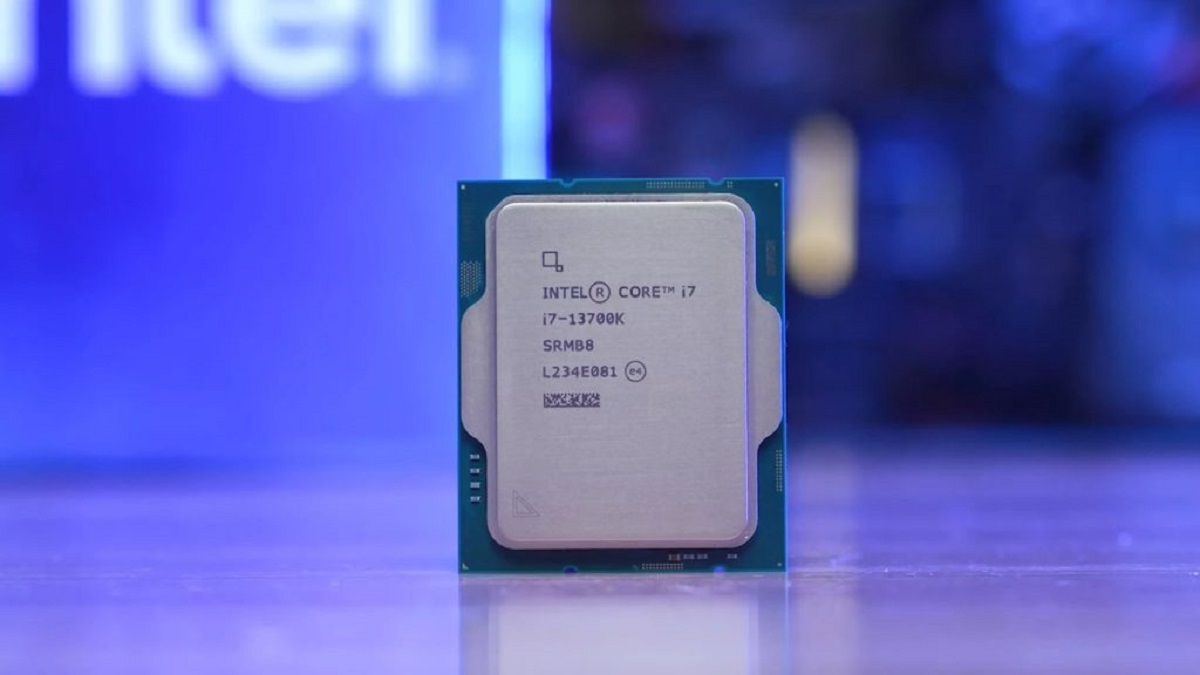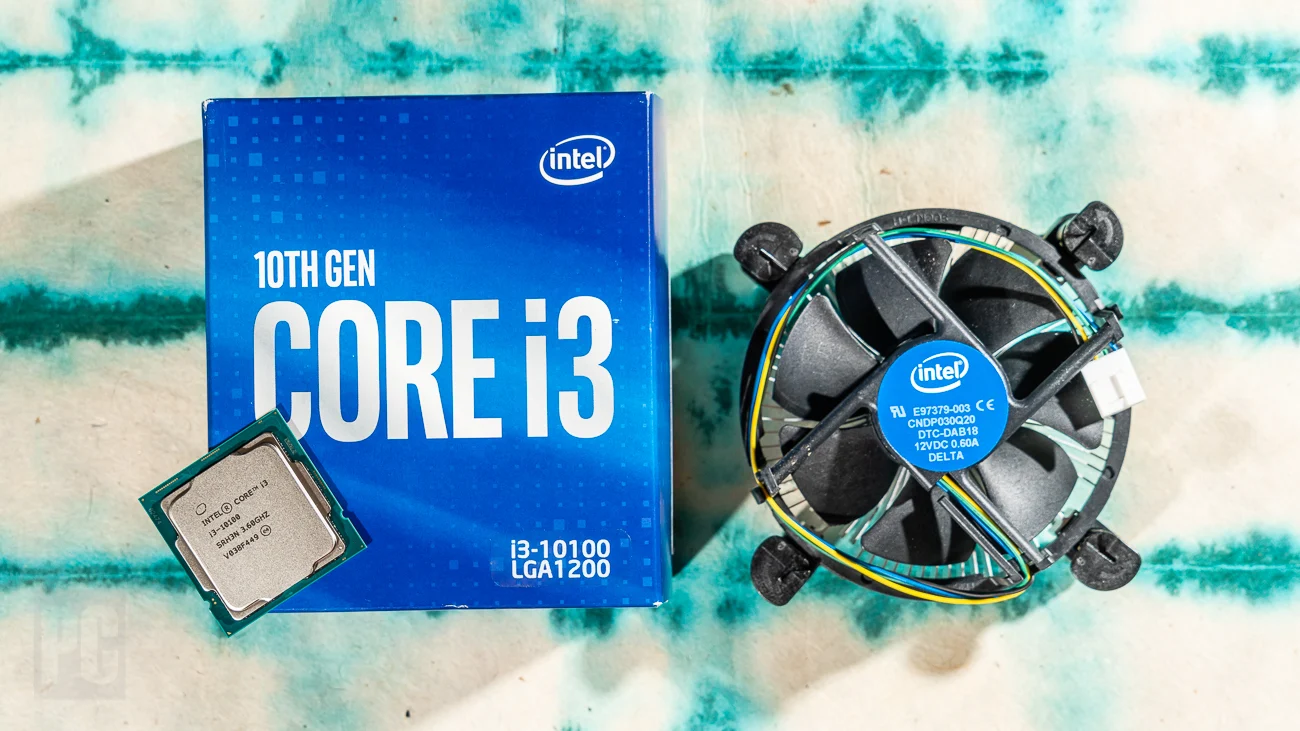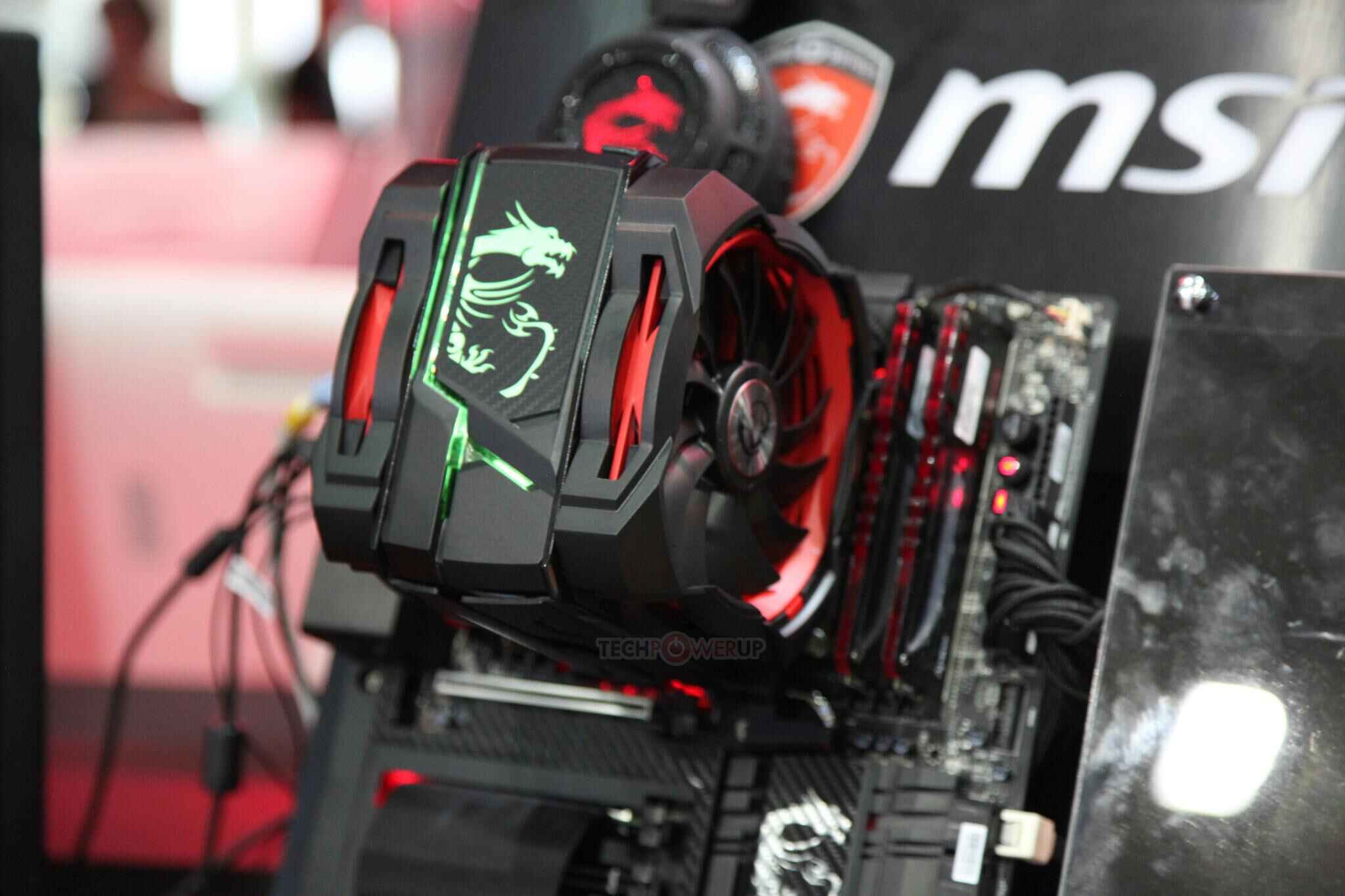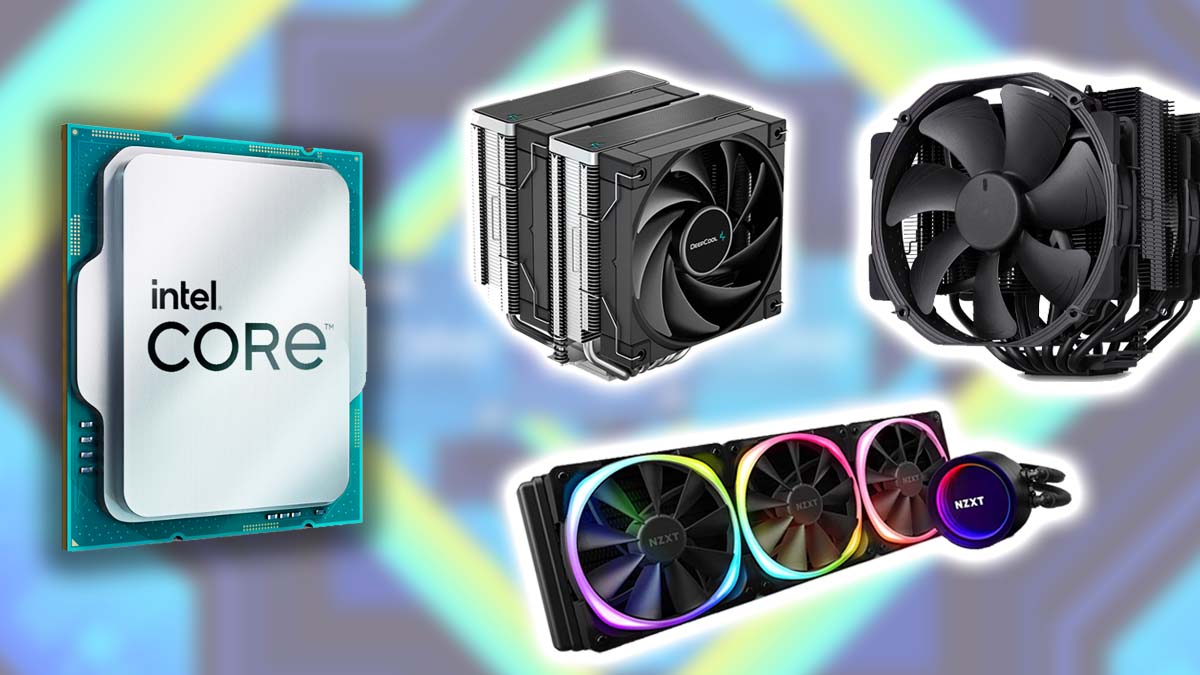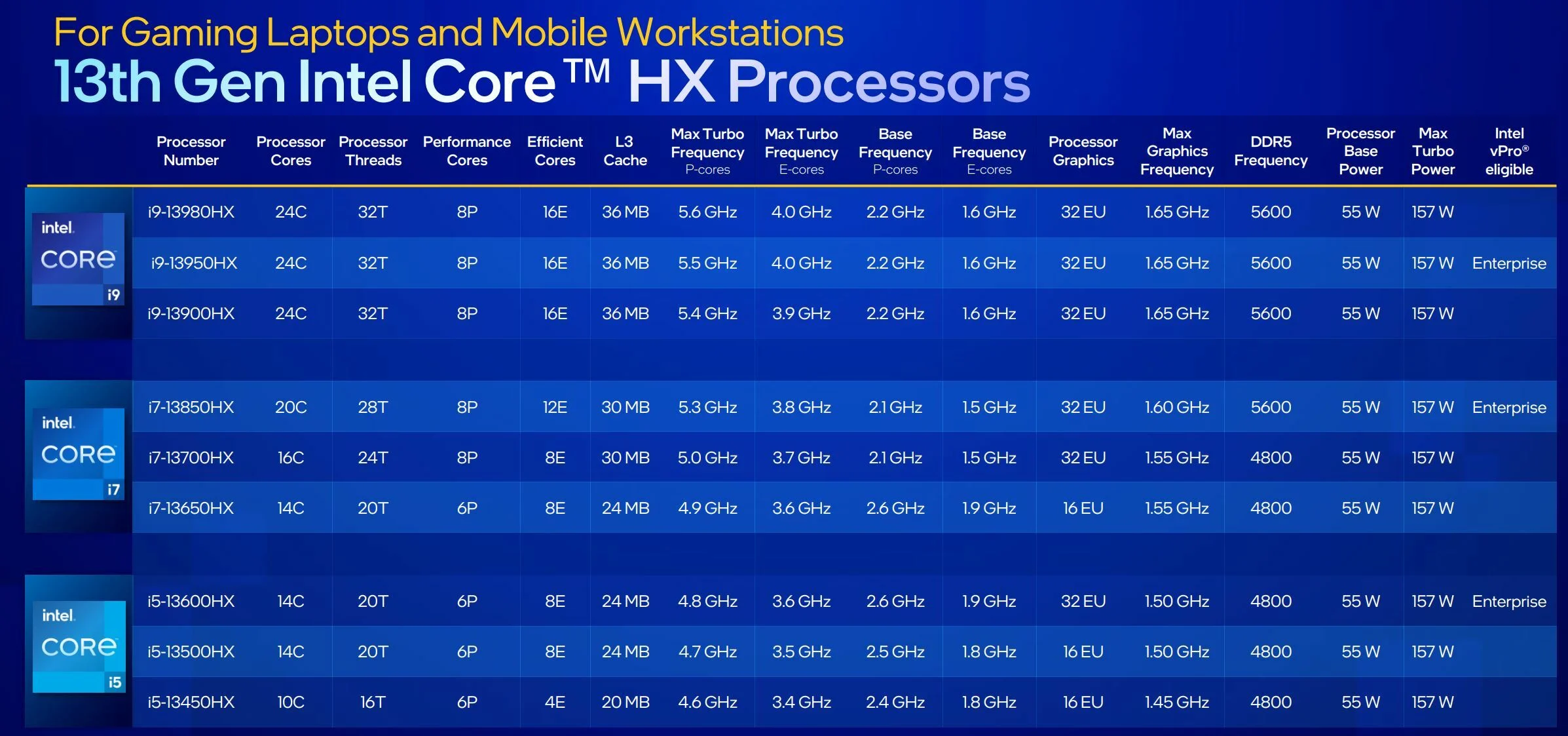Introduction
Welcome to the world of powerful processors! In this article, we will delve into the fascinating realm of 10-core CPUs and explore their significance in the field of computer technology. CPUs, or Central Processing Units, are the brains of a computer system, responsible for executing instructions and handling data. They are the driving force behind the performance and speed of a machine.
Before we dive into the specifics of a 10-core CPU, let’s first understand what a CPU is and how it functions. A CPU is an electronic circuit that carries out the basic arithmetic, logical, control, and input/output (I/O) operations of a computer. It performs these tasks by interpreting and executing instructions from the computer’s memory.
Now, let’s focus on what a core is in the context of a CPU. In simple terms, a core can be thought of as an independent processing unit that can execute instructions. It comprises the Arithmetic Logic Unit (ALU) and the Control Unit (CU), which are responsible for performing calculations and controlling the CPU’s operations, respectively.
As technology has advanced, the number of cores in CPUs has increased significantly. Traditionally, CPUs used to have a single core. However, with the advent of multi-core processors, CPUs can now have multiple cores, each capable of handling its own set of instructions simultaneously. This parallel processing capability offers significant advantages in terms of performance and multitasking.
In this article, we will specifically explore 10-core CPUs. These CPUs have ten independent processing units, allowing them to handle an increased number of instructions simultaneously. This enhanced parallel processing capability offers numerous benefits for various computing tasks, including gaming, content creation, scientific simulations, and data analysis.
Throughout this article, we will discuss the advantages and disadvantages of 10-core CPUs, how they improve performance, and their applications in different use cases. So, buckle up and get ready to immerse yourself in the fascinating world of 10-core CPUs!
What is a CPU?
A CPU, or Central Processing Unit, is the primary component of a computer system responsible for executing instructions and performing calculations. It is often referred to as the “brain” of a computer, as it controls and coordinates all the essential operations required for the computer to function.
The CPU works in conjunction with the computer’s memory to fetch, decode, and execute instructions. It executes millions, if not billions, of instructions per second, enabling the computer to perform various tasks efficiently.
Inside a CPU, you’ll find several key components. The most important ones include:
- Arithmetic Logic Unit (ALU): This component performs mathematical operations, such as addition, subtraction, multiplication, and division. It also handles logical operations, such as comparisons and Boolean logic.
- Control Unit (CU): The control unit manages and coordinates the activities of the CPU. It fetches instructions from memory, decodes them, determines what operation to perform, and then directs the ALU to execute those operations.
- Registers: These are small, high-speed memory locations within the CPU that store temporary data, instructions, and addresses. Registers help in accelerating the execution of instructions by providing quick access to essential data.
- Cache: The cache is a small, high-speed memory located within the CPU. It stores frequently accessed data and instructions, reducing the time it takes to access data from the main memory.
Together, these components work together seamlessly to perform the instructions and operations needed to run software, execute programs, and complete tasks on a computer.
CPUs come in various types and configurations, catering to different computing needs. They can vary in terms of clock speed, instruction set architecture (ISA), cache size, and the number of cores they possess.
Now that we have a basic understanding of what a CPU is and its primary components, let’s delve further into the concept of CPU cores and their significance in computer technology.
What is a Core?
In the context of CPUs, a core refers to an independent processing unit capable of executing instructions. Think of it as a mini-CPU within a larger CPU. Each core consists of its own arithmetic logic unit (ALU) and control unit (CU), allowing it to independently perform calculations and handle instructions simultaneously.
When a CPU has multiple cores, it has the ability to execute multiple threads (instructions) simultaneously, known as parallel processing. This parallelism allows for increased performance and efficiency since multiple tasks can be executed simultaneously, rather than sequentially.
To illustrate this concept, imagine a single-core CPU as a single worker trying to complete several tasks. The worker can only work on one task at a time, so if there are multiple tasks, they must be completed sequentially. On the other hand, a multi-core CPU is like having multiple workers. Each worker can focus on a separate task, allowing for faster completion of all tasks.
The number of cores in a CPU can vary greatly. CPUs typically have either 2, 4, 6, 8, 10, or even more cores, depending on the specific model and purpose. The more cores a CPU has, the more tasks it can handle simultaneously.
It’s important to note that the number of cores doesn’t necessarily equate to better performance in all scenarios. The efficiency of a CPU depends on several factors, including the specific workload, software optimization, and the design of the CPU itself. For example, a CPU with fewer cores but higher clock speed and better architecture may outperform a CPU with more cores but lower clock speed and inferior architecture in certain tasks.
Additionally, the concept of hyper-threading exists, which allows each CPU core to handle multiple simultaneous threads. This technology effectively doubles the number of threads a CPU can execute, although it doesn’t provide the full performance benefit of having physical cores. Hyper-threading can be beneficial in certain workloads that benefit from simultaneous execution of threads.
In summary, a CPU core is an independent processing unit within a CPU that can handle instructions and perform calculations. The number of cores in a CPU determines its ability to execute multiple tasks simultaneously, leading to improved performance and multitasking capabilities.
Why are Cores Important?
Cores play a crucial role in the performance and capabilities of a CPU. They are essential for improving overall efficiency, multitasking capabilities, and the speed at which tasks are executed. Here are some key reasons why cores are important in modern CPUs:
1. Parallel Processing: Cores allow CPUs to execute multiple threads simultaneously, enabling parallel processing. This means that different tasks can be executed independently on separate cores, speeding up overall performance. With more cores, a CPU can handle a greater number of tasks simultaneously, leading to improved multitasking capabilities.
2. Increased Throughput: With multiple cores, a CPU can process more instructions per unit of time, resulting in higher throughput. This is particularly beneficial for resource-intensive tasks such as video editing, 3D rendering, scientific simulations, and data analysis, where a large number of calculations need to be performed.
3. Improved Responsiveness: Cores allow for smoother and more responsive operation, especially in systems with demanding workloads. Each core can be dedicated to a specific task, ensuring that critical processes are not slowed down by other running applications.
4. Efficient Resource Allocation: Multiple cores provide greater flexibility in resource allocation. Each core can be assigned to specific tasks, ensuring optimal utilization of resources and preventing bottlenecks. For example, one core can be assigned to handling background processes, while another core can be dedicated to running a resource-intensive game or application.
5. Enhanced Multi-Threaded Performance: Multi-threaded applications, which can take advantage of parallel execution, benefit significantly from multiple cores. Each thread can be assigned to a separate core, maximizing overall performance and reducing processing time.
6. Future-Proofing: As technology and software continue to advance, multi-threaded applications become more prevalent. Having a CPU with multiple cores ensures compatibility with current and future software, allowing for smooth and efficient operation.
It’s worth noting that the benefits of additional cores may not be fully realized in all applications. Some tasks are not designed to take advantage of multiple cores, and the performance improvement may be minimal. Nonetheless, the prominence of multi-core processors highlights their importance in meeting the demands of modern computing.
In the next section, we will specifically explore 10-core CPUs and the advantages they bring to the table.
What is a 10-core CPU?
A 10-core CPU refers to a central processing unit that contains ten independent processing units, known as cores, within a single chip. These cores can handle parallel processing, enabling them to execute multiple tasks simultaneously. The presence of ten cores allows for enhanced multitasking capabilities and improved performance in demanding workloads.
A 10-core CPU is part of the broader category of multi-core processors, which are becoming increasingly common in modern computers. This shift towards multi-core CPUs has been driven by the need to tackle resource-intensive tasks efficiently and to keep up with the demands of advanced software and applications.
Each core in a 10-core CPU operates independently and possesses its own arithmetic logic unit (ALU) and control unit (CU). This independence allows the cores to execute instructions and handle calculations simultaneously, resulting in faster and more efficient processing.
It’s important to note that the performance benefits of a 10-core CPU may not be immediately evident in all applications. Certain tasks and software may not be optimized to fully utilize all the cores available. However, for workloads that can make use of parallel processing, such as video editing, 3D rendering, scientific simulations, and complex multitasking, a 10-core CPU can provide a significant advantage.
Processors with a higher core count, such as 10-core CPUs, are often favored by professionals and enthusiasts who require substantial computing power. They are well-suited for tasks that require extensive data processing, heavy multitasking, virtualization, and running resource-hungry software.
In the next sections, we will explore the advantages and disadvantages of using a 10-core CPU, and how it can improve performance in various applications and use cases.
Advantages of a 10-core CPU
10-core CPUs offer several advantages over their lower core count counterparts. Here are some key benefits of using a 10-core CPU:
1. Increased Multitasking Capabilities: With ten independent cores, a 10-core CPU can handle multiple tasks simultaneously. This is especially beneficial for professionals who need to run resource-intensive software, virtual machines, or perform complex multitasking, without experiencing significant slowdowns.
2. Enhanced Processing Power: The additional cores in a 10-core CPU provide extra processing power, allowing for quicker execution of tasks. This is particularly noticeable in applications and workloads that are optimized for parallel processing, such as video editing, 3D rendering, and scientific simulations.
3. Improved Performance in Multi-Threaded Applications: Many modern software applications are designed to take advantage of multiple cores, known as multi-threading. A 10-core CPU excels in handling multi-threaded applications as each thread can be assigned to a separate core, ensuring efficient and smooth execution.
4. Efficient Resource Allocation: With ten cores, a 10-core CPU provides greater flexibility in resource allocation. Cores can be assigned to different tasks, ensuring optimal utilization of resources and preventing bottlenecks. This results in improved overall performance and responsiveness.
5. Future-Proofing: As software continues to evolve and become more multi-threaded, having a 10-core CPU ensures compatibility with future applications and workloads. It offers a level of future-proofing, allowing you to continue using your system for demanding tasks without having to upgrade the CPU.
6. Suitable for High-Performance Computing: 10-core CPUs are well-suited for high-performance computing scenarios, such as scientific research, data analysis, and machine learning. These tasks often require substantial processing power to handle massive amounts of data and complex calculations efficiently.
It’s essential to note that the advantages of a 10-core CPU may not be fully realized in all applications. Some software may not be optimized to take advantage of multiple cores, resulting in minimal performance improvement. Additionally, power consumption and heat dissipation may increase with higher core counts. However, for those who require the processing power and multitasking capabilities, a 10-core CPU can provide a significant performance boost.
In the next section, we will explore the potential drawbacks and considerations of using a 10-core CPU.
Disadvantages of a 10-core CPU
While 10-core CPUs offer numerous advantages, they are not without their limitations. Here are some potential disadvantages to consider before opting for a 10-core CPU:
1. Higher Cost: CPUs with more cores tend to be more expensive. The cost of a 10-core CPU may be significantly higher compared to CPUs with fewer cores. If you don’t require the additional processing power, investing in a 10-core CPU may not provide a significant advantage for your specific needs.
2. Power Consumption and Heat Generation: More cores consume more power and generate more heat. 10-core CPUs can be power-hungry under heavy workloads, requiring adequate cooling solutions and potentially leading to higher electricity bills. It is important to ensure your system’s power supply and cooling capabilities can handle the increased demands.
3. Diminishing Returns: The performance benefit of additional cores diminishes in certain applications and workloads that aren’t optimized for parallel processing. Some tasks may rely more on single-core performance or clock speed rather than core count alone. Assess your specific use cases to determine if a 10-core CPU will provide a significant advantage.
4. Limited Gaming Performance: Most games are not optimized for multi-threading and do not make full use of a 10-core CPU. In gaming scenarios, a high clock speed per core is often more important than having a high core count. For gaming purposes, a CPU with fewer, faster cores may be a more suitable option.
5. Compatibility and Software Optimization: Some software applications may not be optimized to utilize all the cores effectively, resulting in suboptimal performance gains. It’s essential to check if the software you use is capable of utilizing multiple cores before investing in a 10-core CPU.
6. Hardware Limitations: Using a 10-core CPU may require a compatible motherboard and chipset. It is crucial to ensure that your system’s hardware infrastructure supports the specific CPU model you plan to use to avoid compatibility issues.
Considering these potential drawbacks, it’s important to carefully evaluate your computing needs and budget before deciding to invest in a 10-core CPU. Assess whether the benefits of increased multitasking capabilities and processing power outweigh the higher cost and potential hardware limitations for your specific applications and workloads.
In the next section, we will delve into how a 10-core CPU improves performance and enhances computing capabilities.
How does a 10-core CPU improve performance?
A 10-core CPU improves performance by providing increased processing power and the ability to perform multiple tasks simultaneously. Here are some key ways in which a 10-core CPU enhances performance:
1. Parallel Processing: With ten independent cores, a 10-core CPU can execute multiple threads simultaneously using parallel processing. This allows for faster task completion and improved multitasking capabilities. Each core can work on a separate task, reducing the overall processing time.
2. Efficient Task Distribution: The additional cores in a 10-core CPU allow for efficient distribution of tasks. Assigning specific tasks to each core ensures optimal utilization of resources and prevents bottlenecks. This leads to smoother operation and improved overall performance.
3. Multi-threaded Applications: Many modern software applications are designed to take advantage of multiple cores. A 10-core CPU can handle multi-threaded applications more efficiently by allocating separate threads to different cores. This results in faster execution and improved performance, particularly in resource-intensive tasks such as video editing, rendering, and scientific simulations.
4. Improved System Responsiveness: With a 10-core CPU, the system can handle resource-intensive tasks without significant slowdowns. Background processes and demanding applications can run simultaneously without affecting overall responsiveness. This allows for smoother operation and seamless multitasking.
5. Enhanced Virtualization Performance: Virtualization requires significant computing resources. A 10-core CPU can handle virtual machines more effectively, providing better performance for running multiple operating systems or applications concurrently. This is particularly beneficial for professionals in fields such as IT, software development, and system administration.
6. High-performance Computing: A 10-core CPU is well-suited for tasks that require extensive processing power, such as scientific simulations, data analysis, machine learning, and complex calculations. The additional cores allow for efficient handling of massive data sets and complex algorithms, enabling faster and more accurate results.
It’s important to note that the performance benefits of a 10-core CPU may vary depending on the specific workload and software optimization. Not all applications are optimized to fully utilize multiple cores, and some tasks may rely more on single-core performance. However, for tasks that can take advantage of parallel processing and multitasking, a 10-core CPU can provide a significant performance boost.
In the next section, we will explore various applications and use cases where a 10-core CPU excels.
Applications and Use Cases for a 10-core CPU
A 10-core CPU is well-suited for a variety of applications and use cases that require substantial processing power and multitasking capabilities. Here are some examples of where a 10-core CPU excels:
1. Content Creation: Video editing, 3D rendering, graphic design, and animation software benefit greatly from the processing power and parallel capabilities of a 10-core CPU. These tasks involve intensive calculations and real-time rendering, which are accelerated by the additional cores, resulting in faster rendering times and improved productivity.
2. Scientific Simulations and Data Analysis: Complex scientific simulations, data analysis, and simulations in fields such as physics, chemistry, climatology, and bioinformatics require substantial computing power. A 10-core CPU can handle the vast amount of data and complex calculations involved in these tasks, significantly reducing the processing time and enabling scientists and researchers to analyze and process data more efficiently.
3. Gaming and Virtual Reality: While many games do not fully utilize all the cores of a 10-core CPU, certain games and game streaming scenarios can benefit from the additional processing power. Games that support multi-threading and those requiring extensive physics calculations or advanced AI simulations can take advantage of the parallel processing capabilities offered by a 10-core CPU, resulting in smoother gameplay and improved graphics performance.
4. Professional Workstations: Professionals who work with resource-intensive software, such as architects, engineers, computer-aided design (CAD) professionals, and software developers, can benefit from the power and multitasking capabilities of a 10-core CPU. These tasks often involve running multiple applications simultaneously, performing complex calculations, and handling large data sets, all of which are accelerated by the additional cores.
5. Virtualization and Server Applications: Virtualization technology allows running multiple operating systems on a single machine. A 10-core CPU is well-suited for virtualization scenarios, enabling the efficient allocation of resources to multiple virtual machines. It provides the necessary computational power and multitasking capabilities required for hosting multiple instances of operating systems, databases, or server applications.
6. AI and Machine Learning: AI and machine learning tasks, such as training large neural network models, require intensive computational power. A 10-core CPU can significantly speed up the training process by parallelizing the calculations across multiple cores. It allows for quicker model training, improved accuracy, and the ability to handle more complex machine learning algorithms.
These are just a few examples of the many applications and use cases where a 10-core CPU can excel. It’s important to consider the specific requirements of your workloads and applications to determine whether a 10-core CPU is suitable for your needs.
In the next section, we will conclude our exploration of 10-core CPUs and the benefits they offer in today’s computing landscape.
Conclusion
In conclusion,
10-core CPUs have become a powerful solution in the world of computer technology. They offer numerous advantages, including increased multitasking capabilities, enhanced processing power, and efficient resource allocation. With their ability to handle parallel processing and execute multiple tasks simultaneously, 10-core CPUs are well-suited for a range of applications and use cases.
Whether you’re a content creator, scientist, gamer, professional using resource-intensive software, or a machine learning enthusiast, a 10-core CPU can greatly improve your computing experience. It provides the necessary processing power and multitasking capabilities to handle demanding workloads efficiently.
However, it’s important to consider the potential drawbacks of a 10-core CPU, such as higher cost, power consumption, and the need for software optimization. Evaluating your specific requirements and workload is crucial in determining whether a 10-core CPU is the right choice for you.
As technology continues to advance, CPUs with higher core counts may become increasingly common. They offer a glimpse into the potential of parallel processing and the future of computing power. Whether it’s for content creation, scientific research, gaming, or professional applications, a 10-core CPU can deliver the performance you need.
When choosing a 10-core CPU, ensure that it is compatible with your motherboard and take into account factors such as clock speed, cache size, and software optimization to maximize the benefits of a multi-core processor. Additionally, consider other system components such as memory and graphics card to build a well-balanced and efficient system.
Ultimately, the decision to invest in a 10-core CPU should be based on your specific computing needs, budget, and the types of tasks you will be performing. With careful consideration, a 10-core CPU can unlock a new level of performance and productivity in your computing endeavors.







